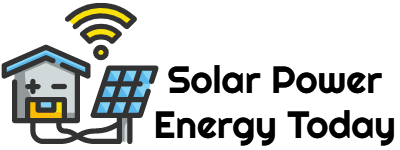Increase solar energy use at home: use a roof – or rent one
Researchers at the University of Technology Sydney say a “use or borrow” approach to Australian rooftops would make solar energy accessible to more Australian households. But the proposed ways of implementing such a plan will undoubtedly generate some resistance.
How would “Use or Lend” work?
Under the “use or lend” concept, owners of suitable single- and two-family homes could be required to either install solar power systems or make their roofs available to the government for public use. Homeowners who operate these government-maintained and insured systems would receive compensation, such as annual rental payments.
I can already hear some cries, but read on and remember that this is just an idea and not something that is already in the federal or state government pipeline.
The low-cost electricity generated by state-owned systems could be allocated to two groups disadvantaged by solar energy: low-income households and renters. Allocation would be possible via a Virtual Energy Network (VEN) platform.
The “use or borrow” approach could also be useful in targeting landlords who are hesitant or unable to invest in a solar power system, according to the study authors1.
Participating property owners could at any time purchase a government scheme, with the pricing of the scheme based on the principle of “cost neutrality”, i.e. the government does not benefit2.
Carrot and maybe a (big) stick
Rights and responsibilities under a lend-or-use-it approach would be set out in law, as would the mandatory installation of solar panels in new and substantially renovated homes and new residential buildings, also proposed by the researchers.
“The former has the theoretical advantage of allowing a qualified body to initiate (“borrow”) the change at any time,” say the researchers. “The latter would force landowners to ‘use’ it (in line with other legal obligations for landowners), but the trigger (obtaining planning permission for major renovations or new housing) could take years, if not decades be removed. Another trigger could be legal deadlines.”
Next (bold mine):
“Given the urgency of the transition to renewable energy and the missed opportunity presented by eligible homes whose owners have not voluntarily opted for solar energy, consideration should also be given to the institutional arrangements necessary to implement a statutory scheme that grants the government solar rights to eligible properties by default.”
Is it a good way to use or lend it?
To date, more than 4.2 million small solar power systems (<100 kW output) have been installed across Australia. A look at current satellite images of Australian suburbs and cities shows many houses with solar panels, but also some with still “bare” roofs.
While we are already seeing issues in some areas where the amount of excess solar energy being exported to the grid is creating power system management challenges, technological advances such as flexible solar exports are helping here. The federal government’s discount for home batteries can also have a positive impact here by freeing up network capacity for the installation of additional solar systems.
The use-it-or-lending-it concept is part of a University of Technology Sydney study looking at the factors influencing residential solar panel use in Greater Sydney from 2013 to 2024.
The researchers found that market factors such as solar system costs and electricity prices had a significant impact on solar deployment and capacity, while feed-in tariffs had a negligible impact – a good thing since feed-in tariffs are generally becoming more stingy. The study also found that housing affordability is a key barrier to solar energy adoption for property owners.
So what do you think about “use or rent” to increase residential rooftop solar use in Australia? particularly the prospect of granting the government solar rights to suitable properties by default? And landlords, while you’re here, learn why installing solar panels on investment properties can make just as much sense as installing a system in your own home.
Footnotes
- SolarQuotes founder Finn Peacock has previously suggested a different approach to supporting renters – affordable, portable, plug-and-play batteries. ↩
- This would also require the installation of high quality systems at fair prices – some programs involving government procurement of equipment and installation appear to have introduced overpriced systems. ↩



Comments are closed.